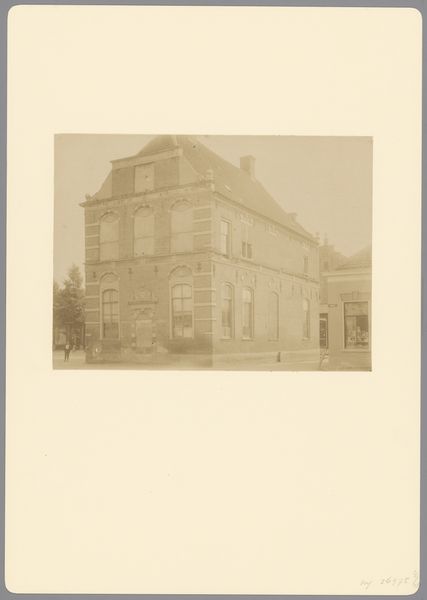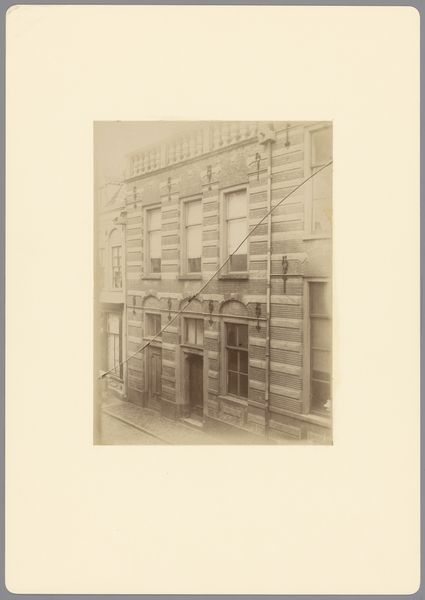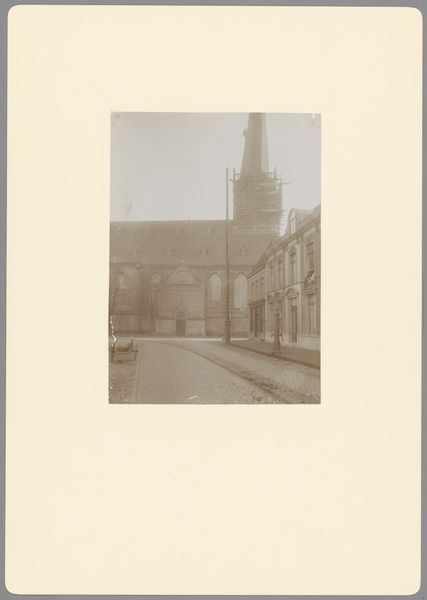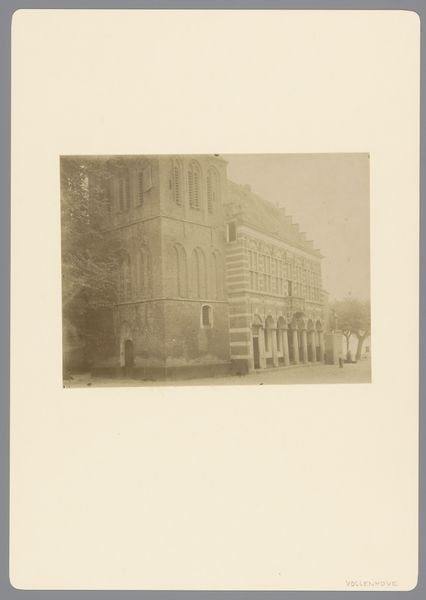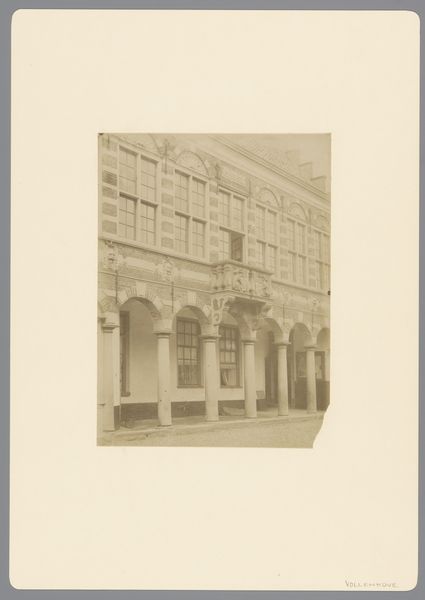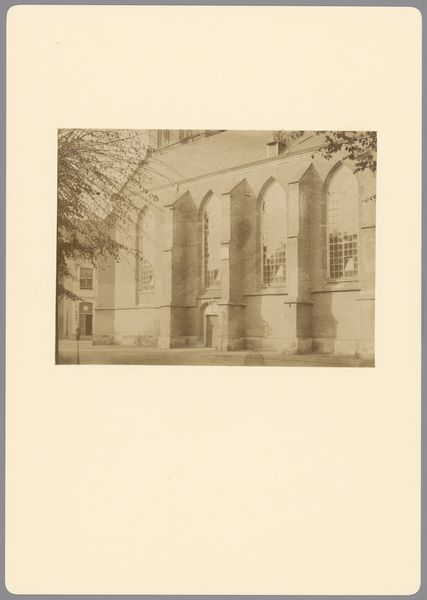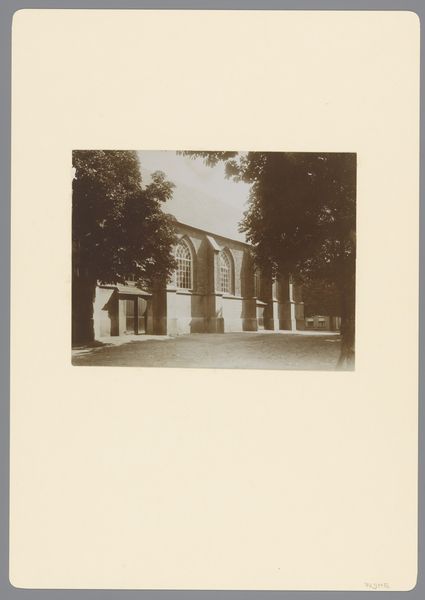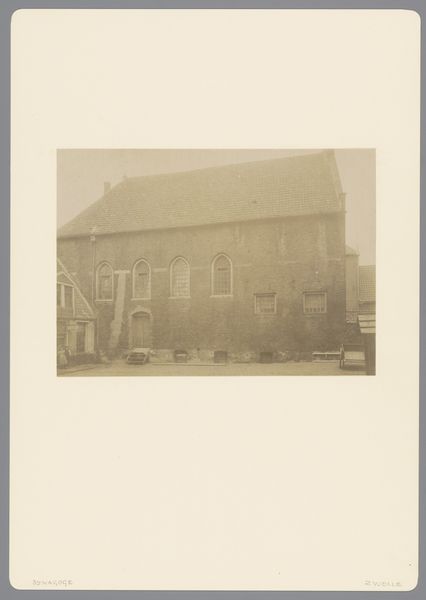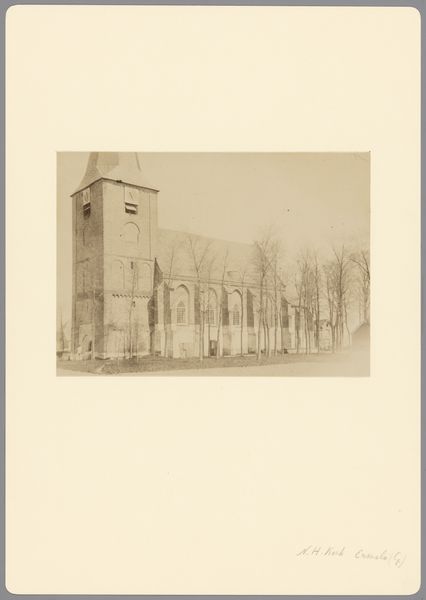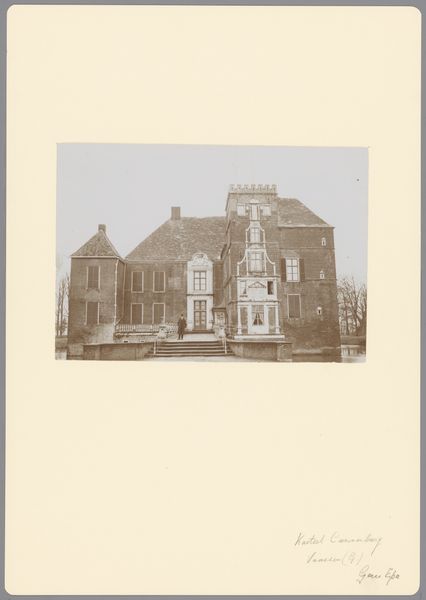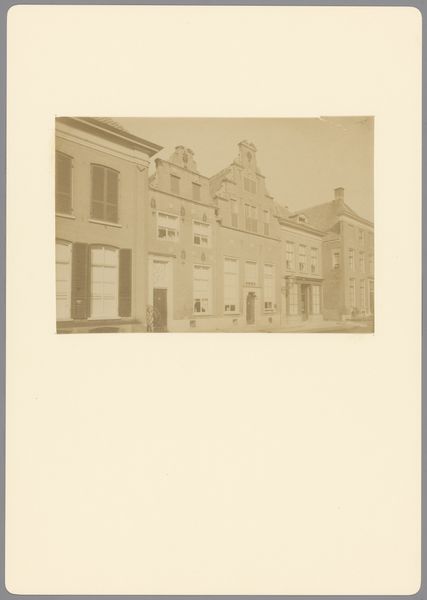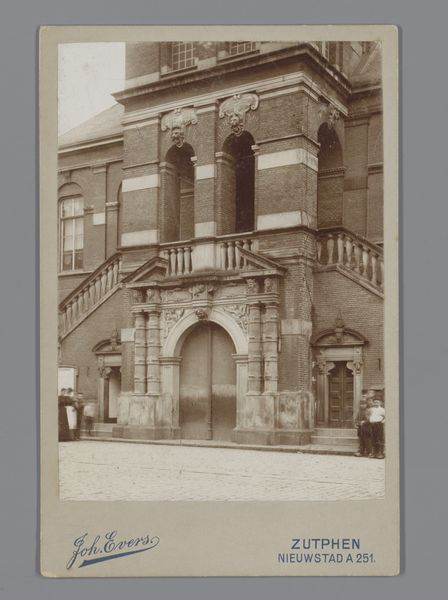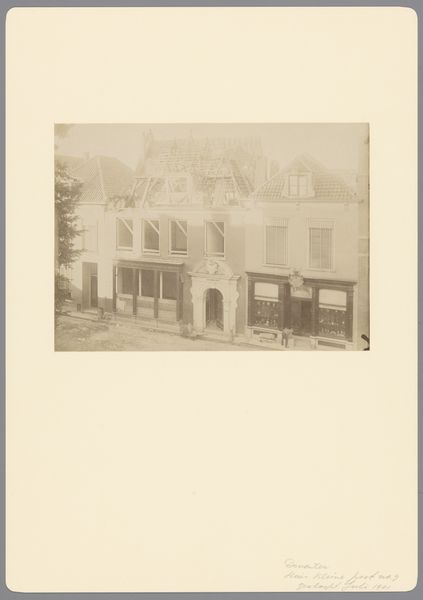
Dimensions: height 232 mm, width 172 mm
Copyright: Rijks Museum: Open Domain
Curator: This photograph captures the facade of a building in Hasselt, dating back to 1895. Note the intricate brickwork and tall arched windows. Editor: It feels quite imposing, doesn't it? There's a formality to the rigid geometry of the facade and those rows of windows, but it’s softened somewhat by the weathered brick and that creeper crawling up the side. It speaks of time, of rootedness. Curator: Absolutely. Consider the process involved: each brick individually made, transported, and carefully placed by bricklayers. That creeper is interesting—nature slowly reclaiming a human-made structure. It reflects the interplay between built form and organic growth. It’s a very tactile, grounded aesthetic that speaks of the labor involved. Editor: And the symbolism. The symmetry, the repeated arches—they suggest stability and order, ideas that resonated deeply during the late 19th century, perhaps even communicating power or established status. Think of the civic pride such a building might have evoked! Curator: I'm struck by the materiality of the photograph itself too. The sepia tones create a sense of historical distance, of something carefully preserved, even archived. It invites us to consider what and how we value the built environment. Editor: It does also draw the eye to certain design choices, those almost classical details around the doorway and windows...perhaps an attempt to link the present with a glorious, even idealized past. It’s interesting how those features interact with the quite sober red brick. Curator: From my perspective, the photograph highlights how local materials shaped the architectural vocabulary of the time. The red brick was likely sourced nearby, impacting the aesthetic choices in a direct way. This wasn't some architect shipping in exotic stone. It’s practical. Editor: I appreciate seeing the dialogue of materials and symbols reflected here. A photograph can be a mirror, of our ambitions as well as realities. Curator: Indeed. Examining these details gives us access not just to a building, but a network of connected economies and meanings. Editor: Thanks for pointing all that out. I see that facade in a whole new way now.
Comments
No comments
Be the first to comment and join the conversation on the ultimate creative platform.
